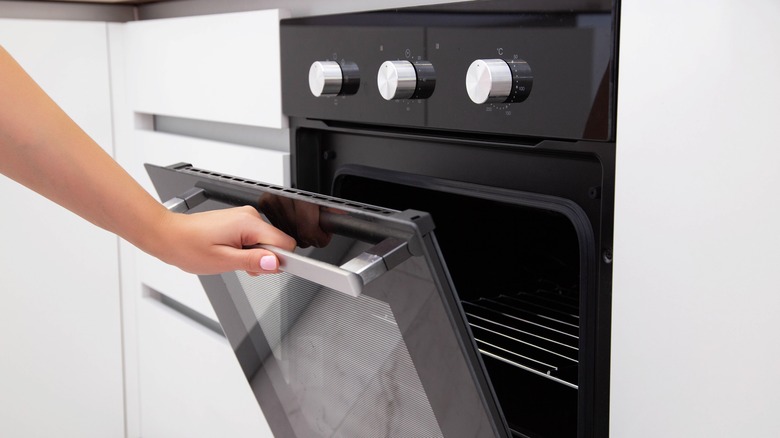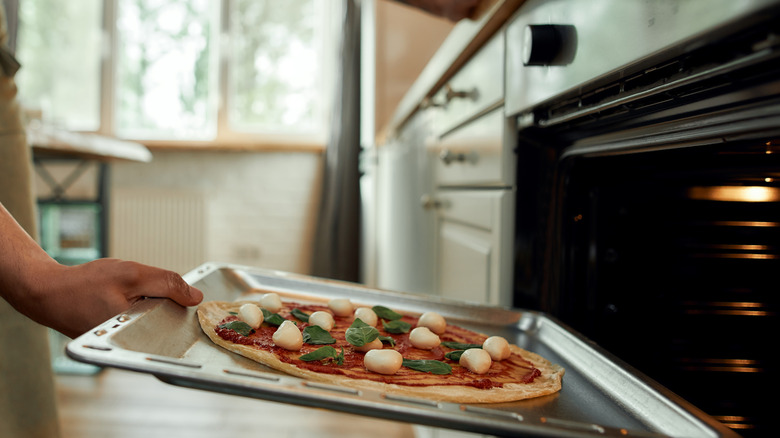The Biggest Misconception About Your Convection Oven
We certainly have a lot of beloved kitchen appliances, but a convection oven has to be one of our favorites. It's incredible at baking and roasting dishes, cooking them quickly while imparting food with a delicious crisp. While we'll proudly tout all the best ways to use your convection oven, we stand firm in the fact that baking a pizza in it is not one of them. Contrary to popular belief, a convection oven will never produce a restaurant quality pie.
On the surface, a convection oven seems like a cheaper alternative to a pizza oven. The appliance circulates air throughout the cavity to create a consistent flow of heat that cooks food evenly. It operates somewhat similarly to a pizza oven, which creates an even dome of heat within the entire apparatus. Technically, you can bake pizza in a convection oven, but it won't be the same quality, and this mainly comes down to temperature.
While most convection ovens reach up to 550 degrees Fahrenheit, pizza ovens go up to 800 degrees Fahrenheit, with some even reaching 1,000. These temperatures sound intense, but it's what your pizza needs to be restaurant quality. It could take around 10 to 12 minutes to bake a pie with a convection oven, but only two minutes in a pizza oven, which is efficient for making multiple pizzas for events. The quick cooking time also maintains a crust that's equally crisp and fluffy — that's hard to achieve in a convection oven.
How to make the most out of your convection oven when making pizza
For pizza enthusiasts, an outdoor pizza oven is one of the best investments you can ever make. That said, they're on the pricier end, and if you're not churning out pizzas regularly, it may not be something you want to splurge on. While a convection oven isn't perfect, it can still make a suitable pizza, especially if you employ a few tips and tricks.
One of our favorite methods is a baking sheet hack that will create a makeshift pizza oven at home. In lieu of a pizza stone, opt for a baking sheet, which is great at retaining heat. Invert the baking sheet and preheat it in the oven before placing the pizza on top, then watch as the crust turns from doughy to crisp. For the best results, you'll need to turn your oven up to as high as it can go.
Aside from the surface you put it on, the position of your oven rack matters for pizza as well. Since most of the heat from the oven will flow out from the bottom, you'll want to place the pizza on the lower rack so the crust is instantly hit with all the heat, effectively browning it. Finally, since the airiness of an oven-baked pie is one of its best qualities, opt for lighter toppings that won't weigh it down and make it soggy.

